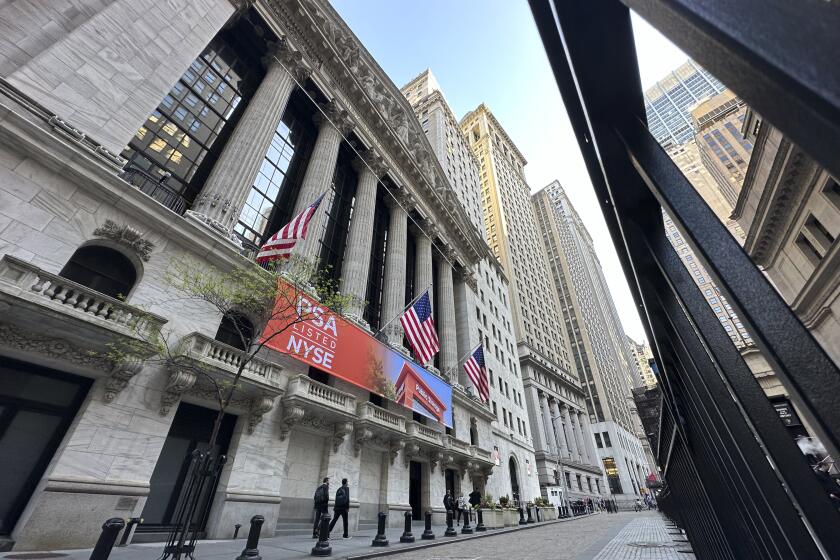Do Big Money and Bohemians Mix?
Richard Florida has advice for city officials seeking to pump life into sluggish local economies: Forget breaking your back or your budget to lure mega malls and convention centers to town. There’s a much easier way: Recruit a healthy “creative class.”
That would include those clever bohemians, loft-dwelling artists and skateboarding techies who made places such as the Bay Area thrive in the late 1990s. Make no mistake, the Carnegie Mellon professor says, the Internet bubble may have burst, but the creative class that fueled it--nose rings, tattoos, spiked hair and all--still reigns when it comes to transforming a sleepy suburb or depressed downtown into the next boomtown.
That’s the gist of Florida’s best-selling book “The Rise of the Creative Class,” which has generated buzz from his ivory tower in Pittsburgh to the economic development offices of Southern California. His thesis has become the focus of debate among both trend watchers and planners in cities, such as Santa Ana, Brea and Riverside, that are seeking to revive--or create from scratch--downtowns ravaged by decades of suburban sprawl.
His theory discourages cities from building another “big-box” retailer. Instead, cities serious about enlivening the local business scene are encouraged to lure creative types with happening music scenes, thriving gay and ethnic communities, and maybe even tax breaks for bohemians and other artsy types who fuel the information economy. Census information is used to make the case that cities with a big creative class are flourishing while others remain stagnant, depleted of creative talent thanks to a bland cultural scene.
“We’re going through a big economic change,” said Florida. It used to be that workers lived where the company was, he said, but now “companies go where the highly-skilled people live.”
Local boosters of the theory note that these are renaissance days for diverse places with a grass-roots arts movements and funky live-work spaces: Pasadena, Santa Monica and downtown Los Angeles. Orange County has been able to cash in by attracting entrepreneurs to homes among the seaside cafes of Laguna Beach or the budding arts scene in Santa Ana. Their start-up companies fill the offices of Irvine and Newport Beach.
Yet others caution chambers of commerce against recruiting new residents at Phish concerts and the X Games. They suggests that Florida’s theory is a holdover from the heady days of the late 1990s and no longer applies in these more conservative times.
“A lot of this thinking that the high-tech folks just want to move into the cool district is a product of the bubble economy,” said Joel Kotkin, author of “The New Geography: How the Digital Revolution Is Reshaping the American Landscape,” a book Florida used, ironically, in developing his creative class theory. “Saying there is a connection between bohemianism and economic development is a stretch now.”
Wishful liberal thinking is how Kotkin, himself a liberal, characterizes the creative class outlook. Under its structure, the cities that supposedly do the best are the ones that encourage gay rights and immigration.
“The reality is that Silicon Valley is not where it is because of gay people,” Kotkin said. “Most of those guys were nerds from the Midwest who went to San Francisco for dinner every once in a while. They liked the climate and cleanliness of Palo Alto.”
In other words, the diversity of the Bay Area did not play a major role in its boom.
He questions the concept that openness and tolerance are what makes a city attractive to the most brilliant of the New Economy--the buzz-term for that segment focused on new computer and telecommunication technologies.
“They might like diversity if it means having an Indian doctor living next door,” Kotkin said. “But are they eager to have a house crowded with three families from El Salvador next door? I don’t think so.”
Bottom line: “It just doesn’t make a lot sense for cities to recruit some 27-year-old bearded guy smoking a joint and eating a goat-cheese pizza,” Kotkin said.
So what’s a city to do to bring the New Economy to town? Kotkin urges a measured infusion of urban culture that has broad appeal. The construction of lofts and apartments in downtown districts is a good place to start, he says. In other words, follow the model of Santa Monica and Pasadena.
Demographics experts warn that it’s the absence of that kind of housing in much of the “boomburbs” surrounding Los Angeles--those rapidly growing powerhouses that remain suburban in character--that keeps them from cashing in on the New Economy.
William Gartner, a professor of business at USC, is co-author of a study that concludes that entrepreneurial activity is directly related to how urban a city is--more urban equals more start-up companies per capita. He says that positions downtown L.A. to come back in a big way.
“This is no longer a Fortune 500 town, but those office buildings are being filled with other things,” Gartner said.







